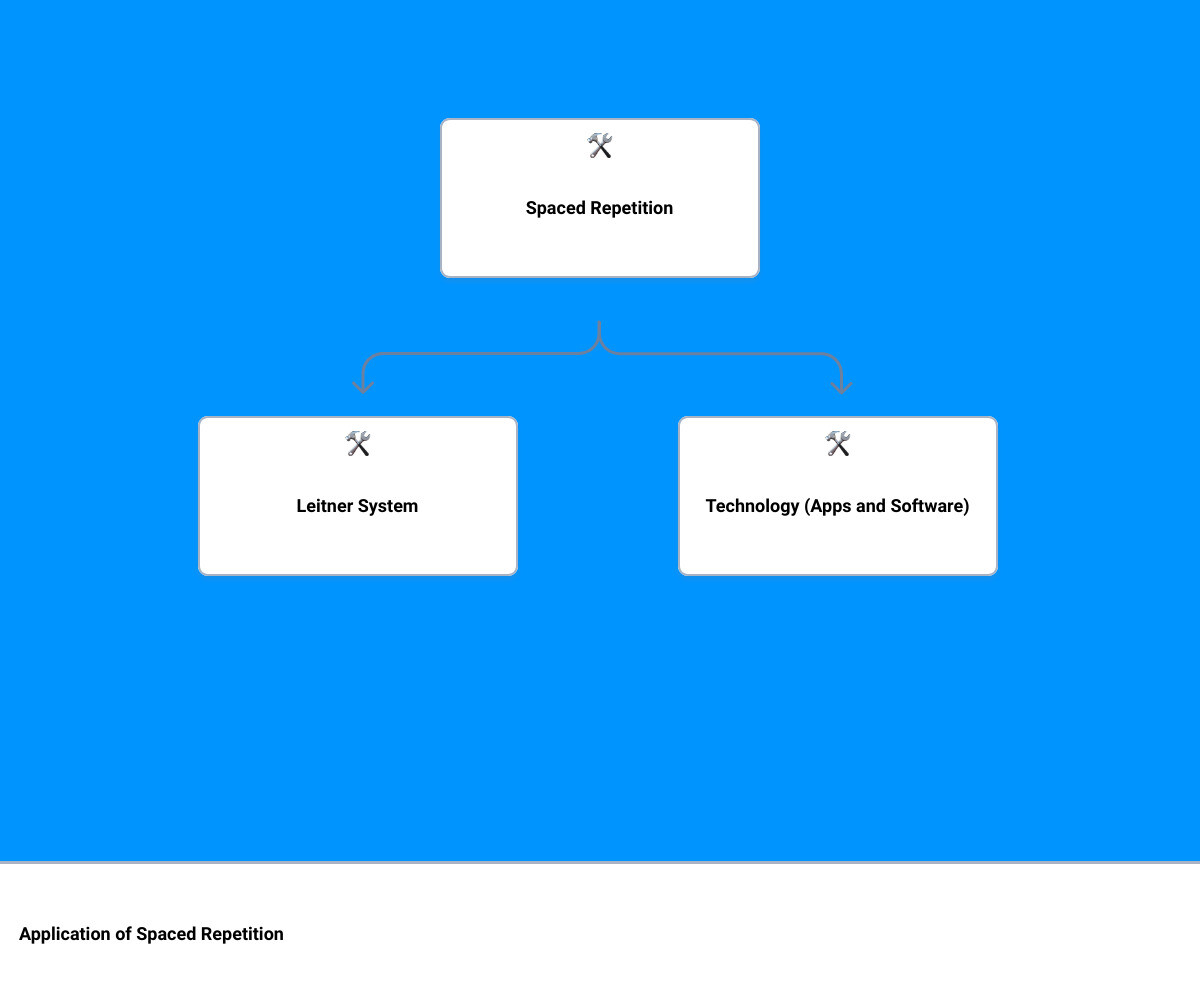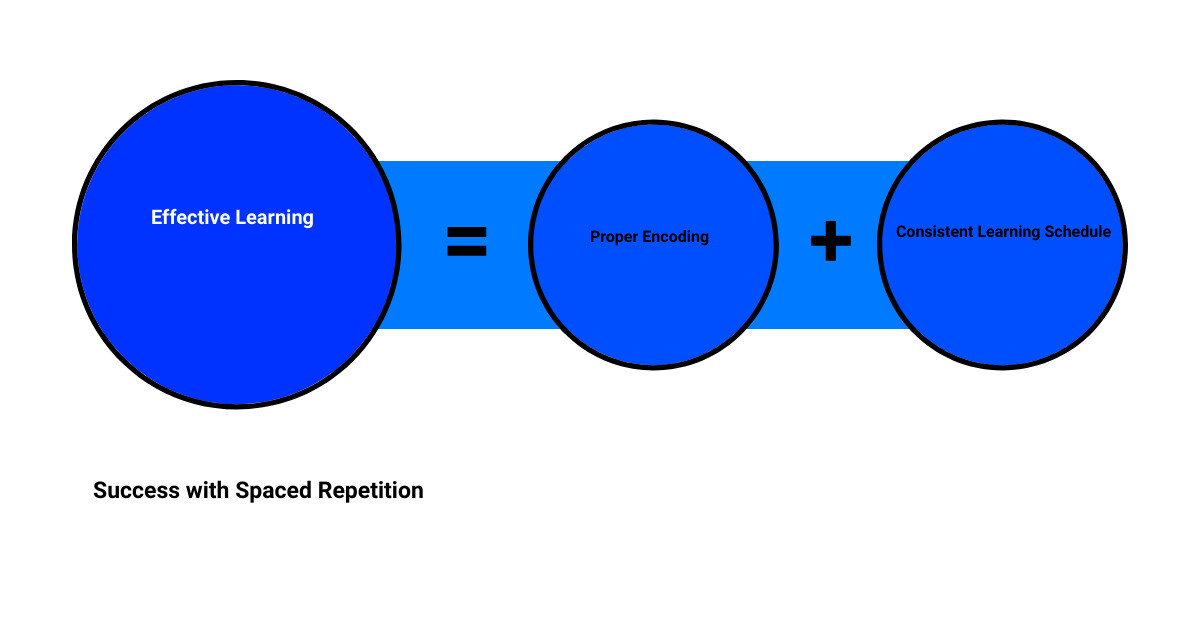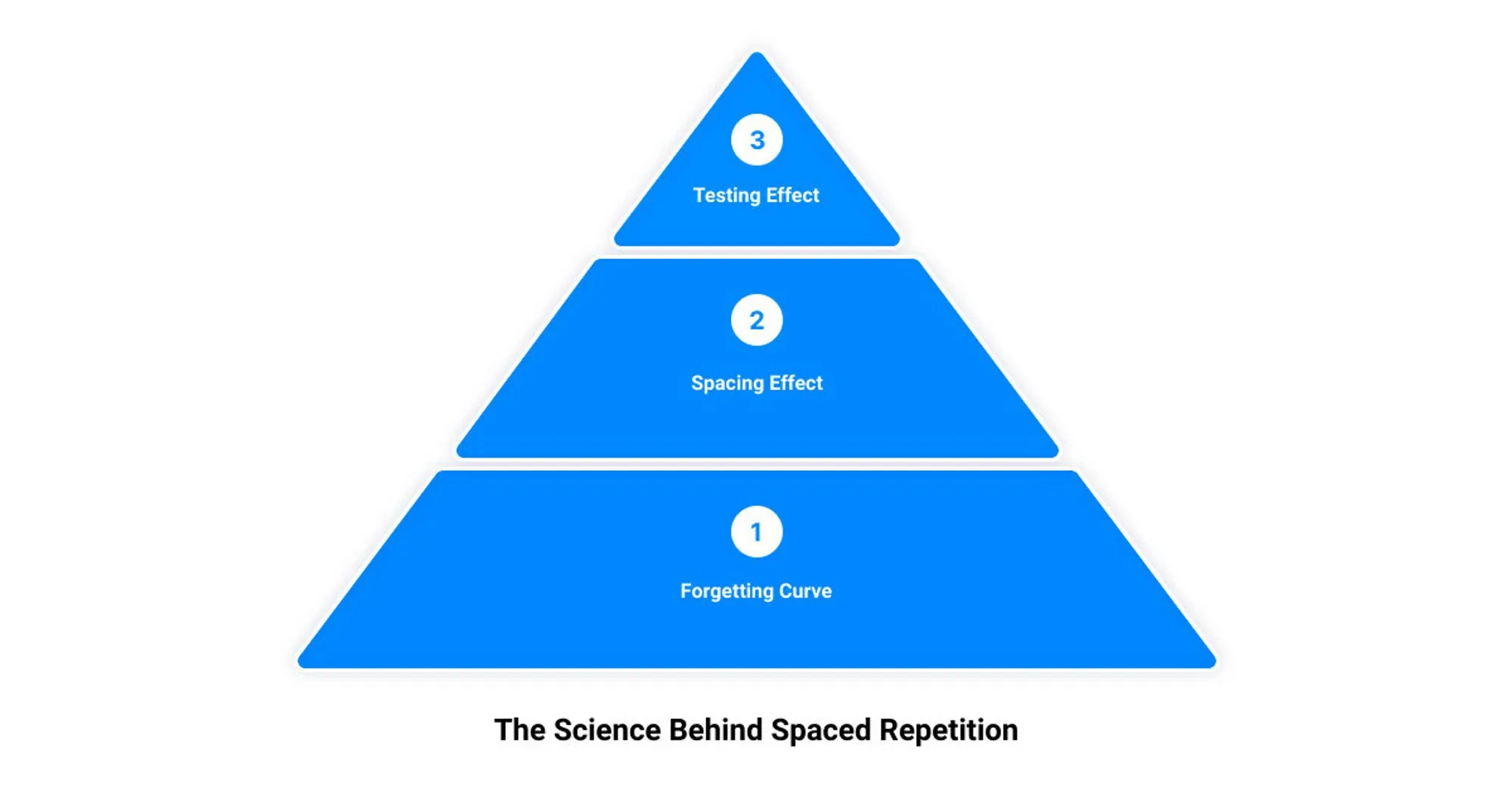Imagine having a tool that could dramatically enhance your ability to learn and remember new information - from complex scientific concepts to thousands of Mandarin characters. Well, it's not just a figment of your imagination. It's real, it's science-backed, and it's called spaced repetition. This powerful learning technique can revolutionize your study habits, transforming you from a passive learner into an active knowledge conqueror. In this article, we will explore the science behind spaced repetition, its practical application, and how you can harness its power using Traverse, a learning app that combines mind mapping, note-taking, and spaced repetition to optimize your learning experience.
Spaced repetition is far from a new concept. In fact, its roots lie in the 19th-century research of psychologist Hermann Ebbinghaus. He developed the concept of the forgetting curve, which describes the rate at which we forget new information. But with the application of spaced repetition, this forgetting curve can be reset, allowing you to retain more information for a longer period.
Whether you're an aspiring polyglot, a future mathematician, a Mandarin learner, or someone who simply enjoys learning, understanding the principles of spaced repetition can revolutionize the way you acquire and retain new information. So let's dive deeper into this effective learning technique.
Understanding the Science Behind Spaced Repetition
Just as a master key unlocks any door, understanding the science behind spaced repetition can unlock the full potential of your memory. This powerful learning technique is backed by cognitive science and centuries of research. Let's unravel the fascinating principles that make it so effective.
The Forgetting Curve and Its Impact on Learning
Our journey into the science of effective learning begins with the pioneering memory researcher Hermann Ebbinghaus. He developed the concept of the forgetting curve, which describes how memories fade over time if there's no attempt to retain them. The curve begins steep, indicating rapid memory loss, but levels off as time progresses.
However, Ebbinghaus also discovered that this memory decay could be slowed down. By reviewing the information at strategic intervals, the steep forgetting curve could be 'reset'. This process strengthens the memory, thus increasing the time it takes for the information to fade. This idea serves as a fundamental basis for spaced repetition learning, where timely reviews are used to boost memory retention.
The Spacing Effect and Its Role in Memory Retention
Another critical principle underpinning spaced repetition is the spacing effect. It's the phenomenon where our brains learn more efficiently when our study sessions are spread out over time. This spacing effect allows our mental 'mortar' to dry, solidifying new knowledge and making the learning process more effective.
The spacing effect goes hand-in-hand with the concept of desirable difficulty, as introduced by Robert Bjork. This principle suggests that learning is most effective when it's challenging, but not too hard. Spaced repetition, with its gradually increasing review intervals, provides just the right amount of challenge to keep our brains engaged and our learning optimized.
The Testing Effect and Active Recall in Spaced Repetition
The final piece of the puzzle is the testing effect, also known as 'active recall'. It emphasizes the effectiveness of actively testing oneself on a piece of knowledge rather than passively re-reading it. Research shows this method to be 51% more effective than passive re-reading and 93% more effective than doing nothing.
In essence, the science of spaced repetition lies at the intersection of these principles. By understanding and leveraging the forgetting curve, the spacing effect, and the testing effect, we can harness the power of our brains, transforming the way we learn and remember.
Next, we'll delve into the optimal spaced repetition schedule, and how to adapt it for individual learning needs and goals. The journey to mastery is a marathon, not a sprint, and understanding the science behind spaced repetition is your first step towards efficient and effective learning.

The Optimal Spaced Repetition Schedule
Imagine having a personalized roadmap guiding you towards your learning goals. With an optimal spaced repetition schedule, that's exactly what you get - a strategic plan tailored to your brain's natural forgetting curve, helping you remember more for longer. Let's explore the proven intervals and how they can be adapted for individual learning needs and goals.
Dr. Piotr Wozniak's Recommended Intervals
Dr. Piotr Wozniak, the developer of the first computer algorithm for spaced repetition, recommends a sequence of increasing intervals for optimal retention. Starting with a repetition on Day 1, the schedule proceeds to a second repetition seven days later, a third repetition after 16 days, and finally, a fourth repetition 35 days after the initial learning session.
These intervals are designed to coincide with your brain's natural forgetting curve, engaging with the material just as you're about to forget it, thereby reinforcing the memory. But remember, this is a suggested schedule - you may need to tweak the intervals to fit your personal learning style and the demands of the material you're studying.
Adapting the Schedule for Individual Needs and Goals
While Dr. Wozniak's intervals provide a solid foundation, the best spaced repetition schedule is the one you can stick to. Adapting the schedule to your individual needs and goals is key to mastering your learning.
For instance, if you're preparing for an exam, you might want to adjust the intervals to accommodate the limited time available. Start by identifying high-yield material that is most likely to appear on the test and prioritize it in your schedule. You could begin with a few hours between reviews, gradually increasing to daily reviews, and then every few days as the exam approaches.
Or, if you're mastering a new language like Mandarin, consider adopting Pimsleur's intervals. These intervals start from as little as 5 seconds and can go up to 2 years, depending on the complexity of the language and your familiarity with it. This unique approach to spaced repetition can be particularly effective for language learners, allowing for gradual progression and continual reinforcement of the material.
The Importance of Balancing Spaced Repetition with Other Learning Strategies
While spaced repetition is a powerful tool in your learning arsenal, it's vital to balance it with other evidence-based learning strategies. Initial learning, where you make logical sense of the material, can significantly reduce the number of repetitions needed to master the material. In fact, so-called 'encoding techniques' to get a better grasp of the material are used by only 12% of students, even though the expected increase in retention is even larger.
Also, consider interleaving related topics in your study plan. Mixing familiar and new material in your schedule can help reinforce your understanding and improve your ability to apply the information in various contexts.
Remember, the key to successful learning isn't cramming — it's consistent, spaced-out repetitions over time. By carefully crafting and adhering to your optimal spaced repetition schedule, you can effectively train your brain to retain information for longer periods and excel in your learning journey.

Practical Application of Spaced Repetition
From flashcards to software, there are numerous ways to apply the principles of spaced repetition in your learning journey. Let's delve into some of the traditional as well as tech-driven approaches to this effective learning technique.
The Leitner System: A Traditional Approach to Spaced Repetition
Before the digital revolution, learners relied on the Leitner System for implementing spaced repetition. Developed by German scientist Sebastian Leitner in the 1970s, this system uses physical flashcards and a series of labeled boxes to facilitate efficient review and retention of information[^1^][^3^].
The process is straightforward: you create flashcards, label a series of boxes with numbers representing review intervals, and start by placing all flashcards in the first box. If you answer a card correctly, it moves to the next box. If you answer incorrectly, it goes back to the first box[^1^]. This simple, structured approach ensures that you're reviewing the right information at the right time, making your study sessions incredibly efficient[^3^].
While the Leitner System has its merits, it faces a limitation in integrating with digital study materials, which are increasingly prevalent in modern learning environments[^1^].
The Role of Technology in Spaced Repetition: Apps and Software
As we continue to advance in the digital age, technology has become an integral part of our learning journey. It has made incorporating the principles of spaced repetition more accessible and efficient than ever before[^1^][^2^]. A wide variety of spaced repetition software (SRS) programs are available, providing digital alternatives to traditional flashcard systems.
One of the most widely used SRS is Anki, known for its high degree of customizability and extensive support for grouping and tagging flashcards[^1^][^4^]. However, Anki's interface might seem outdated to some, and its learning curve can be steep[^1^].
Quizlet is another popular choice. It offers a simple user experience and a solid flashcard system. However, it lacks a built-in spaced repetition feature, and it's easy to fall into the trap of using pre-made shared decks instead of creating your own, which could hinder the learning process[^1^].
Remember, effective learning is not solely about spaced repetition. It's vital to supplement your practice with other apps and techniques to achieve effective encoding and avoid getting stuck in 'flashcard hell'[^1^].
In the end, it's about finding a system that fits your learning preference, that you can stick with consistently, and that complements the other techniques in your learning toolbox[^1^].
[^1^]: Unlock the Secrets of Effective Learning with Space Spaced Repetition | Traverse [^2^]: Unlock Your Learning Potential with Fascinating Spaced Rêptition Techniques | Traverse [^3^]: Master Your Memory: Unleash the Power of Spaced Memorization | Traverse [^4^]: Unlock the Secrets of Effective Learning with Space Spaced Repetition | Traverse
Traverse: The Ultimate Tool for Spaced Repetition
Overview of Traverse and Its Unique Features
If you're on the hunt for a comprehensive tool that not only incorporates spaced repetition but also integrates mind mapping and advanced note-taking, look no further than Traverse. This all-in-one learning hub offers a science-based approach to learning, making it perfect for the proactive learner who is always on the lookout for strategies backed by cognitive science.
Traverse stands out in the learning tech industry with its unique blend of features. Notably, it is the first 100% Anki-compatible app, allowing you to import your Anki decks and keep learning without missing a beat. Traverse's adaptability to individual learning needs and circumstances sets it apart, unleashing your learning potential like never before.
How Traverse Combines Spaced Repetition, Mind Mapping, and Note-Taking
Traverse champions the principle of active recall and spaced repetition, offering customizable flashcards to optimize your study process. However, the platform goes beyond simple repetition techniques, offering robust mind mapping features and advanced note-taking capabilities. With Traverse, you can create and manage directional links, utilize color-coding for easy visual identification, and even write equations using Latex. This multi-faceted approach empowers you to deeply learn complex topics, going beyond the limitations of traditional learning methods.
Importing Anki Decks into Traverse for Continued Learning
For those who have been using Anki, a popular spaced repetition software, transitioning to Traverse is seamless. Traverse allows you to import your Anki decks, ensuring that your previous learning efforts are not wasted. This feature, combined with Traverse's advanced capabilities, means you can continue to build on the solid foundation you've already laid, but with an even more powerful tool at your disposal.
Traverse's Partnership with Mandarin Blueprint for Mandarin Learners
In an exciting development, Traverse has formed a strategic partnership with Mandarin Blueprint, an acclaimed platform known for its effective approach to learning Mandarin Chinese. This collaboration brings together the proven techniques of Mandarin Blueprint and the advanced learning technology of Traverse, creating a powerhouse for Mandarin language learners. By integrating visual mnemonics, mind mapping, and SRS flashcards, Mandarin learners are offered an immersive experience that goes beyond mere vocabulary.
In conclusion, Traverse offers the ultimate platform for spaced repetition, providing learners with the tools they need to master complex subjects efficiently and effectively. Whether you're learning Mandarin, diving into machine learning, or studying for medical exams, Traverse is your go-to tool for success.

Tips for Success with Spaced Repetition
To truly unlock your potential with spaced repetition, it's crucial to not only understand the science behind it, but also know how to use it effectively. Here are some practical tips that will help you maximize the benefits of this scientifically-proven memory technique.
The Importance of Proper Encoding and Understanding of Information
Just as a computer cannot retrieve a file that hasn't been properly saved, your brain cannot recall information that hasn't been well-encoded. Understanding the information you're studying is the first step in ensuring it is properly encoded into your memory. Avoid rote memorization and aim for a deep understanding of the material. This involves actively engaging with the content, connecting new information to what you already know, and using mnemonic strategies where appropriate.
Creating a Consistent Learning Schedule
Consistency is key in spaced repetition. Establish a study schedule that includes regular review sessions and stick to it. According to Dr. Piotr Wozniak's research, the ideal intervals for spaced repetition are 1 day, 7 days, 16 days, and 35 days after initial learning. However, when preparing for an exam or under time constraints, you may need to adjust these intervals to suit your needs. Remember, the goal is to engage with the material just as you're about to forget it, thereby reinforcing the memory.
Balancing Spaced Repetition with Other Learning Techniques
While spaced repetition is a powerful tool for memory retention, it's not a magic bullet. It should be used in conjunction with other proven learning strategies for optimal results. For instance, incorporate active recall through practice questions to reinforce understanding and simulate exam-like conditions. Also, consider using mind mapping or connected note-taking to aid in the understanding of complex subjects. And don't forget to factor in time for rest and recovery - overworking can lead to burnout and diminished performance.
In conclusion, successful learning isn't about cramming the night before an exam. It's about consistent, spaced-out repetitions over time. By following these tips and using tools like Traverse, you can effectively train your brain to retain information for longer periods, making your study sessions more efficient, and excel in your learning journey.
Conclusion: Unlocking Your Potential with Spaced Repetition
The journey of learning, especially a complex language like Mandarin, can often feel like climbing a steep mountain. However, by harnessing the power of spaced repetition, the climb becomes a series of manageable steps. With the right tools and strategies, such as those provided by Traverse, you can conquer not just the mountain, but the entire range.
Spaced repetition is more than just a learning technique. It's a science-backed strategy that is designed to work with your brain's natural tendencies, not against them. It optimizes your learning process by syncing with your forgetting curve, making use of the spacing and testing effects to enhance memory retention and recall. But remember, while it's a powerful tool, it works best in balance with other learning strategies, such as proper encoding of information, active learning, and consistent scheduling.
Our exploration has shown us that technology plays a crucial role in implementing spaced repetition. Tools like Traverse take the concept of spaced repetition and elevate it to the next level, integrating it with other effective techniques like mind mapping and note-taking. What's more, it's a tool that evolves with you, adapting to your individual needs and goals, and even allowing you to import your Anki decks for a seamless learning experience.
For our lifelong learners striving to master Mandarin, Traverse's partnership with Mandarin Blueprint brings an added advantage, providing a tailored experience designed to make mastering Chinese characters a breeze.
Ultimately, successful learning isn't about cramming the night before an exam. It's about consistent, spaced-out repetitions over time. With these strategies and tools at your disposal, you're not just studying smarter—you're unlocking your true learning potential.
Embrace the power of spaced repetition. Take control of your learning journey. And remember, every giant leap forward begins with a single step. Your first step? Implementing spaced repetition with Traverse today.

